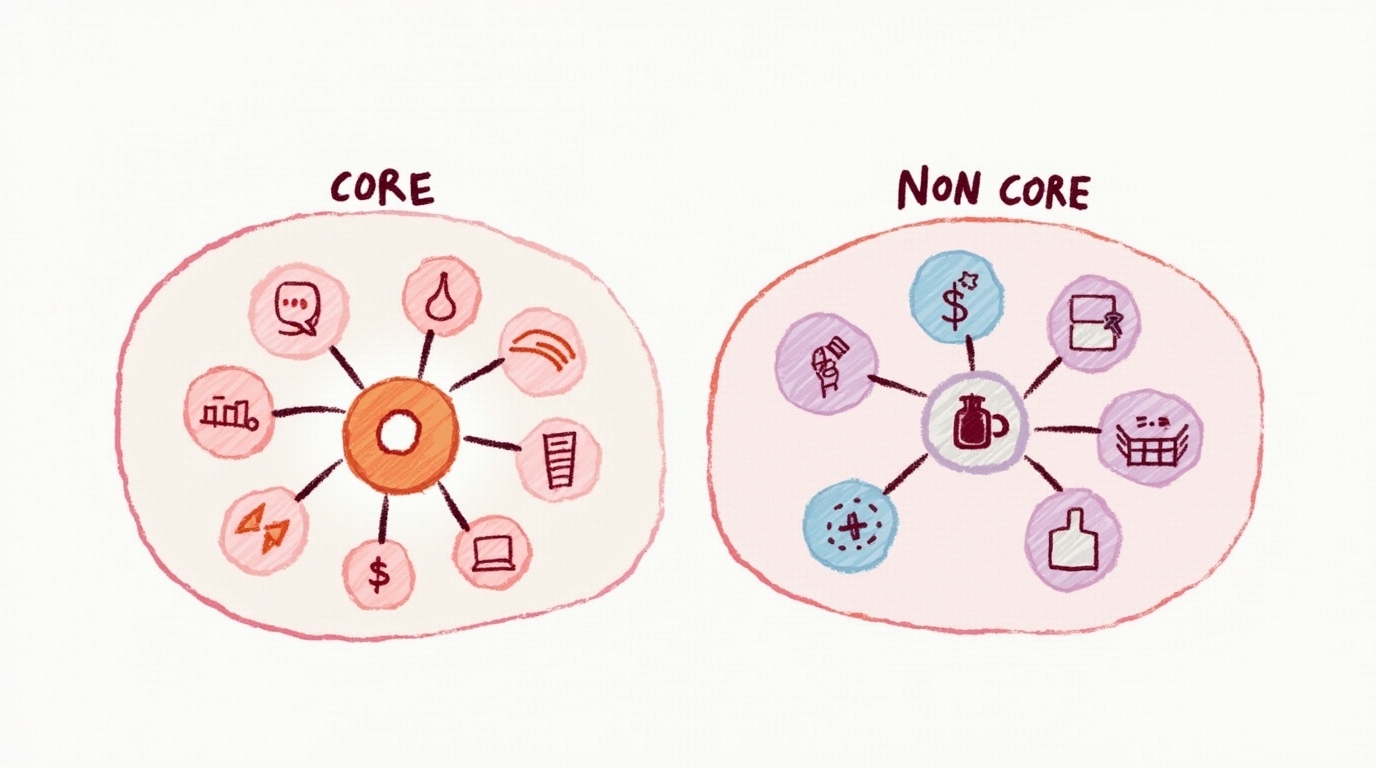

Introduction
For any enterprise classified as a Micro, Small or Medium Enterprise (MSME) in India, the journey to sustainable growth hinges on three interconnected pillars: registration, accounting, and MIS reporting. Together, they form a strong foundation that helps a business gain legitimacy, maintain financial health, and make data‑driven decisions.
In this article you will get a clear walk‑through of:
How to register an MSME (what it means, why it matters)
Key accounting practices tailored for MSMEs
How MIS (Management Information Systems) and MIS reporting fit into business management, especially for such enterprises
1. MSME Registration: Establishing Legitimacy & Accessing Benefits
1.1 What is MSME Registration?
The term MSME refers to enterprises classified under the Ministry of Micro, Small & Medium Enterprises (India) criteria for micro, small and medium enterprises.
Registration — often called Udyam Registration (which replaced Udyog Aadhaar Memorandum) — is the formal recognition of an enterprise as an MSME under the Government’s framework.
1.2 Why Register? What are the Benefits?
Registration is free, online, paperless and based on self‑declaration.
Key benefits:
Unique registration number (URN) and certificate that serves as proof of MSME status.
- Access to government schemes, subsidies, priority sector lending, easier access to tenders and procurement benefits.
- Legitimacy in business ecosystem, often improved credit‑worthiness.
1.3 Eligibility & Classification
Classification is based on two main parameters: investment in plant/machinery (or equipment for services) and annual turnover. For example: Micro – investment up to ₹2.5 crore and turnover up to ₹10 crore; Small – investment up to ₹25 crore and turnover up to ₹100 crore; Medium – investment up to ₹125 crore and turnover up to ₹500 crore.
1.4 Process: Step by Step
Visit the official Udyam Registration portal.
- Enter Aadhaar number and name of applicant. OTP is generated and verified.
- Provide PAN, business type, organisation type, turnover & investment details, business address, NIC code, bank account details.
- Verification is automatic via government databases (PAN, GST etc). On successful submission, certificate with URN and QR code is generated.
- No renewal is required; registration remains valid unless business circumstances change.
1.5 Key Tips & Pitfalls
Ensure your Aadhaar and PAN details are correct and matched to business owner or authorised person.
Investment and turnover data needs to be accurate; mis‑classification can lead to issues.
Even though the process is minimal documentation, keep records in case of audits or verifications.
Register early: delays can mean missing out on scheme benefits or tenders.
If your business type, turnover or investment changes (moves to next category), review registration accordingly.
2. MSME Accounting: Establishing Financial Discipline
2.1 Why Accounting Matters for MSMEs
For MSMEs, good accounting goes beyond statutory compliance — it is the backbone of business health. It ensures you have reliable numbers, know your cash‑flow, can track profitability, and are prepared for audits, loans, and tax obligations. Modern accounting also integrates with MIS reporting (the next section).
2.2 Key Accounting Practices for MSMEs
Choose the right system & software: Cloud‑based accounting tools help automate data entry, link GST, generate financial statements and reduce risks of manual errors.
Maintain bookkeeping rigorously: Record all sales, purchases, expenses, bank transactions, reconcile accounts, track receivables/payables.
Segment business streams: If you have manufacturing + service or more than one product line, maintain separate cost centres to track profitability properly.
Cash‐flow monitoring: For MSMEs especially, cash‑flow is mission‑critical. Ensure you track inflows/outflows, working capital, and manage receivables proactively.
- Statutory compliance: GST, TDS, tax filings, accounting standards (for some MSMEs under certain thresholds) must be complied with.
- Periodic management review: Monthly or quarterly management accounts help you see variances, budget vs actual, cost overruns etc.
2.3 Linking Accounting to MIS Reporting
Accounting produces raw data — MIS reporting transforms that into management insights. For example: from your bookkeeping you derive metrics like gross margin by product, debtor ageing, profitability by cost centre — which feed into MIS dashboards.
2.4 Best Practices & Tips
Automate where possible to reduce errors and free up time for analysis rather than just data entry.
Set up cost centres and clear chart of accounts that reflect your business segments.
Keep clean records of investment, turnover, loans — these may impact registration category, scheme eligibility etc.
Use rolling budgets and forecasts; don’t just rely on last year’s numbers.
Train your team or outsource accounting to ensure accuracy and reliability — incorrect numbers affect decision‑making and MIS.
3. MIS Reporting in Business Management: From Data to Decisions
3.1 What is MIS Reporting?
MIS stands for Management Information System. MIS reporting refers to the structured generation and presentation of business data — typically from multiple departments (sales, operations, finance, inventory) — into meaningful reports and dashboards. Its aim: help management make informed decisions.
3.2 Why MIS Reporting Matters Especially for MSMEs
Gives a single source of truth for performance — not just financials but operations, inventory, customer metrics.
- Enables real‑time or periodic insight: you don’t wait for annual statements; monthly/weekly dashboards drive agility.
Helps with forecasting and scenario planning: trend reports highlight where you’re headed.
Supports compliance, audit readiness, investor/lender conversations — demonstrating structured data and decision‑orientation builds credibility.
3.3 Types of MIS Reports Relevant for MSMEs
Some common report types:
Financial MIS Reports: profit & loss summary, balance sheet snapshots, cash‑flow statements, budget vs actual.
Sales & Marketing MIS Reports: revenue by product, region or customer channel; customer acquisition cost; conversion rates.
Inventory / Operations MIS Reports: stock turnover, slow‑moving items, capacity utilisation, order‑to‑delivery time.
Exception / Alert MIS Reports: delinquent receivables, cost overruns, under‑utilised assets, anomalies.
3.4 Building an Effective MIS Framework for MSMEs
Here’s a step‑by‑step approach:
Define purpose & KPIs: What decisions do you want to support? (e.g., “Should we launch new product?”, “Should we increase credit to this client?”, “Is our working capital under stress?”)
Gather & integrate data: Pull from accounting software, sales/CRM, operations system. Ensure data quality.
Process & analyse: Clean the data, compute metrics (e.g., A/R days, gross margin by product, inventory days).
Design reports/dashboards: Use charts, tables, traffic‑light indicators for quick readability. Focus on what matters.
Schedule & distribute: Decide how often (daily, weekly, monthly) and who receives (owner, finance head, operations head).
Review & act: Insights without action are wasted. Ensure there’s a process for follow‑up and implementation.
Refine: As business evolves, KPIs and reports must evolve too.
3.5 Common Pitfalls & How to Avoid Them
Data silos & inconsistencies: If departments use separate systems that don’t sync, MIS is weak. Ensure integration or centralised database.
Over‑reporting / complexity: Too many metrics confuse; pick the top 5‑10 KPIs especially for smaller enterprises.
Lack of action: Reporting must link to decisions. Establish governance — who reviews reports, who acts.
Poor data quality: Garbage in = garbage out. Maintain data hygiene.
Administrative overload: For MSMEs with smaller teams, leverage automation (cloud tools, dashboards) rather than manual spreadsheets.
3.6 What MIS Reporting Enables for an MSME
Better cash‑flow & working capital management: Track receivables, payables, inventory days to prevent cash squeezes.
Cost control & profitability improvement: Highlight unprofitable products or segments and take corrective steps.
Strategic growth decisions: Use trend reports to decide new markets/products or expansion.
Compliance readiness: With structured data, audits, bank queries, and scheme applications become smoother.
Stakeholder confidence: When investors, lenders or scheme‑providers see your management reports, it builds trust.
Conclusion
For a Micro, Small or Medium Enterprise, registering as an MSME is the first step — it opens doors to benefits, formalises your business and builds credibility. But registration alone isn’t enough. Coupling that with sound accounting practices ensures your business stays financially healthy and ready for growth. On top of that, MIS reporting transforms raw data into insights, enabling proactive decision‑making and strategic control.
When these three pillars — Registration → Accounting → MIS Reporting — are aligned, your enterprise gains not just compliance and operational stability, but a real competitive edge.
If you implement these properly, you’re no longer just operating a business — you’re managing a business.
Related Posts
Elevate Your Business Growth with Expert CFO Services: Outsourced & Virtual Solutions for Strategic Financial Leadership
Introduction In today’s fast‑moving business world, strong financial leadership isn’t a nice‑to‑have—it’s essential. Yet, not…
Unlocking Growth Potential: Expert Merger and Acquisition Services for Businesses
In today’s fast-paced and highly competitive global market, businesses must adapt, evolve, and often consolidate…
Top Management Consulting Firms in India – A Detailed Guide
In today’s dynamic business environment, companies across sectors face complex challenges that require specialized expertise…
Top Benefits of Business Process Outsourcing (BPO) Services You Can’t Afford to Ignore
Table of Contents In today’s hyper-competitive business environment, efficiency and cost-effectiveness aren’t just goals—they’re survival…




